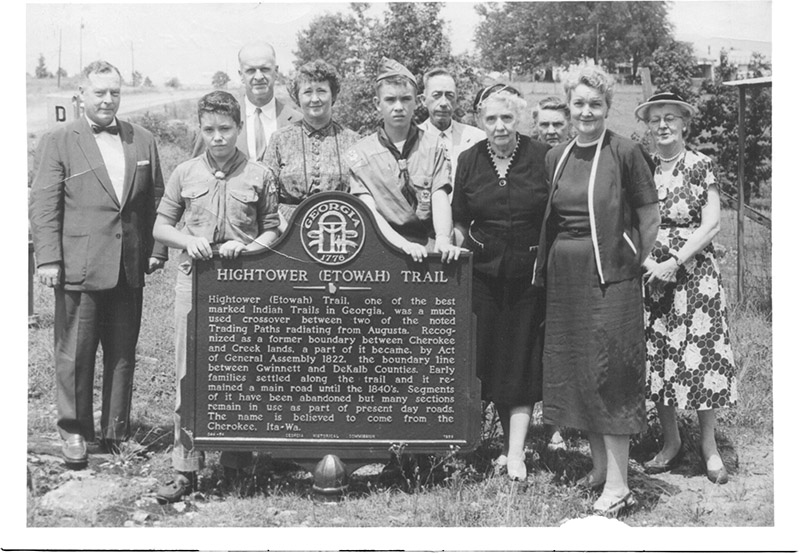The DeKalb Branch of the NAACP and Education
The fight for a quality education for African American children has always been a crucial issue taken on by the NAACP, especially the DeKalb branch.
by Maranda Perez
The DeKalb Branch of the NAACP started in 1955, meeting in Lilly Hill Baptist Church in Decatur, and quickly grew to be the second largest branch of the NAACP in the state of Georgia. The branch in its early days was heavily involved in the Civil Rights Movement, participating in protests and registering as many African American residents to vote as possible. One major cause the NAACP has fought for is equal education for African American children. The DeKalb Branch of the NAACP supported efforts to gain and improve school buildings, resources, and transportation through various court cases, meetings with the school board, and protests fighting to ensure that black children received the same quality of education as white children in DeKalb County. When talking about racial equality or inequality in education most people focus on the eras of segregation and mandated desegregation before and during the Civil Rights Movement, but the fight continued on through the remainder of the twentieth century. Records here in the archives show that tensions regarding racial equity in schools reached a peak in the 1980s. It was during this decade that the DeKalb Branch of the NAACP found a new momentum following a lull in membership during the 70s, and decided to take on some of the prevalent issues African American students faced in DeKalb County classrooms.
Despite the mandate to desegregate schools based on Section VI of the Civil Rights Act of 1964, DeKalb County School System was declared guilty of segregation in 1969, and placed under the watch of federal courts until they fully integrated. One effort made by DeKalb County to fulfill the court order to further integrate schools was the Majority to Minority (M to M) Program established in 1977. This program allowed students to transfer to schools outside of their zoning if they were a racial minority in the desired school if that school had room for new students. Despite this program, some schools were still accused of wrongfully denying African American students admission. The NAACP in DeKalb County specifically took Lakeside High School to court over this issue. In the early 1980s, the NAACP accused Lakeside High School of intentionally barring African American students admission to maintain the white majority at the school. Lakeside High School claimed that they were merely trying to maintain their average classroom size at twenty-three, and that there was no racial bias in their decision to deny admission to transfer students. The NAACP took Lakeside High School to court, and won the case, requiring the school to admit more African American students through the M to M program. The NAACP also took on other cases regarding schooling that were not as successful for the organization such as a case against Redan # 2. The school board was planning on building a second building to house eighth and ninth grade students, and the NAACP believed that DeKalb County was building a new school to avoid rezoning and placing more African American students in predominantly white schools. Even though they lost this second case, the African American community of DeKalb County was pleased to see that the NAACP was active again, after being relatively dormant in the 1970s.
In the years following these cases, tensions remained high between the NAACP and DeKalb County School Board. These tensions reached a breaking point in the summer of 1989 during a routine school board meeting where the NAACP made five proposals to improve the educational situation for African American children. The main rejection that led the NAACP to protest the school board meetings was a refusal to hire more African American officials for the school board, specifically to hire an African American superintendent to oversee South DeKalb schools. The NAACP pointed out that DeKalb County school systems had a majority of African American students, but only one black official on the school board, Phil McGregor. McGregor supported the NAACP in their effort to convince the school board to hire officials that represented their student population. They believed that changing the racial make-up of the school board was a crucial step to making equitable schools in DeKalb County. Throughout the summer, the NAACP joined together at subsequent school meetings hoping to convince the school board to approve their proposals. Tensions between the NAACP and the school began to ease up in September, as the two groups tried to find a compromise that appeased both sides. The school board agreed to hire associate superintendent Dr. Eugene Walker, an African American man, and created the position of Affirmative Action Officer who would report to him. Though these were not the demands the NAACP made to the school board, they agreed to the compromise hoping that the school board would follow through. They were also eager to put the controversy behind them, and move on to other pressing issues on their agenda. The School Board was concerned about the perception of DeKalb County schools that arose due to the controversy, and were also eager to end the protests and make these compromises.
Moreover, in 1989, the NAACP was also tackling the issue of the disparity of highly experienced teachers between predominantly white and predominantly black schools. Many African American parents, with the support of the NAACP, took the school board to court to address this issue leading Judge O’Kelley to rule in favor of the NAACP and required the school board to equalize teacher experience throughout all DeKalb County schools. The school board decided that the best plan of action was to create a random lottery for teachers with twenty or more years of experience, and use the results of the lottery to decide which teachers would move from a predominantly white school to a predominantly black school. Teachers working in DeKalb County schools were on contract through the county, not individual schools, so they were never guaranteed a spot in the schools they taught at previously. However, the county historically did not transfer teachers often. For the lottery, teachers met at Stone Mountain High School and drew a number out of a container. The teachers that drew a number between one and one hundred seventeen they would be transferred to a new school. Teachers, parents, and administrations on both sides of the argument were concerned about the potential outcomes of this plan. Since the lottery happened during the summer, many teachers were concerned that they would not have enough time to plan lessons for their students if chosen to move in the lottery. Phil McGregor expressed his concern that the prejudices of unwilling teachers would prevent them from properly teaching their new students. Many teachers were outraged by their new assignments and protested in various ways. Some teachers said they would use their collected sick days, resign, and some even filed a lawsuit against the school board because of the lottery. The outrage of teachers agitated African American parents who, like Phil McGregor, did not want unwilling teachers affecting the quality of their children’s education. Despite the controversy of the lottery, DeKalb County experienced a below average rate of resignations with only eight teachers leaving DeKalb County Schools. Moreover, some teachers were pleased with their new schools, students, and parents saying they felt welcomed by the communities, and that they would always give any child the best education they can.
The fight for a quality education for African American children has always been a crucial issue taken on by the NAACP all over the country, and the DeKalb Branch is no exception to this. The DeKalb Branch has not been afraid to challenge the school board or even specific schools if they feel they are not doing all they can to include and adequately educate African American students. Even when the NAACP does not get the outcomes they hope, they continue to fight for more equitable classrooms for DeKalb County students. It is widely understood that a quality education is important for people to be productive citizens and lead successful lives.
Works Cited
Bell, Chuck. “DeKalb NAACP continues to grow under first woman leader.” DeKalb Extra, February 26, 1987.
Harris, Narvie J. and Dee Taylor. Black American Series: African American Education in Dekalb County. Charleston: Arcadia Publishing, 1999.
“Historical Sketch.” NAACP: 59th Annual Freedom Fund Awards Dinner 2015.
Neal, Paula. “Lawsuit sought in effort to stop teacher transfer.” DeKalb News/Sun, July 12, 1989.
Ordner, Helen. “Again the Victim: Black Parents’ Courtroom Victory may Work to Detriment of their Kids, McGregor Says.” DeKalb News/Sun, August 17, 1989.
Ordner, Helen. “Lottery Chooses Teachers to Go.” DeKalb News/Sun, July 12, 1989.
Ordner, Helen. “Teacher Betty Baldwin Terms Herself ‘A Winner’ in Controversial Lottery. DeKalb New/Sun, August 23, 1989.
Ragsdale, Spencer. “Blacks Disrupt School Meeting over Promotions.” DeKalb News Sun. July 12, 1989.
Ragsdale, Spencer. “School Board, NAACP Nearing Compromise.” DeKalb News/Sun, August 16, 1989.
Ragsdale, Spencer. “NAACP, School Board May be Near Truce.” DeKalb News/Sun, September 20, 1989.
Watkins-Murphy, Carla. “Judge rules schools need race balance.” DeKalb Neighbor, July 6, 1988.
Watts, Robert Anthony. “DeKalb School Board Leans Toward Rejecting 3 of 5 NAACP Proposals.” Atlanta Journal, September 6, 1989.
Watts, Robert Anthony. “Hymn-Singing by NAACP Adjourns Meeting.” Atlanta Journal.
Watts, Robert Anthony. “Teachers’ Outcry Irks South DeKalb Parents.” Atlanta Journal, July 21, 1989.





